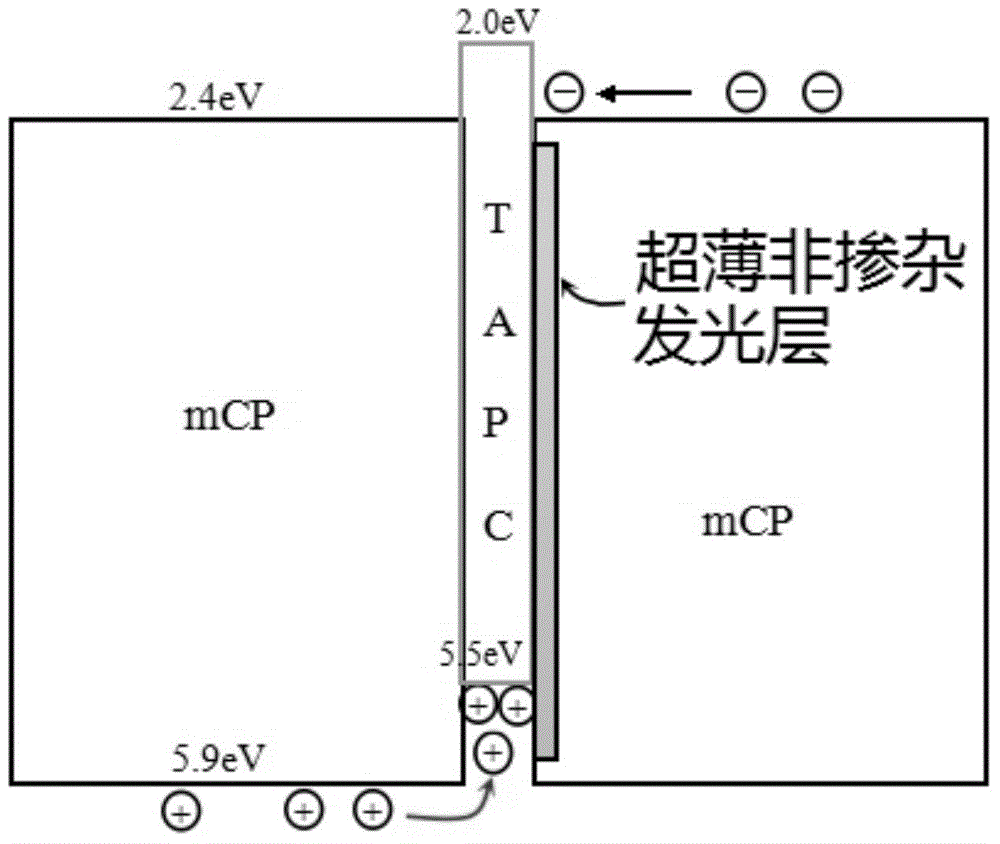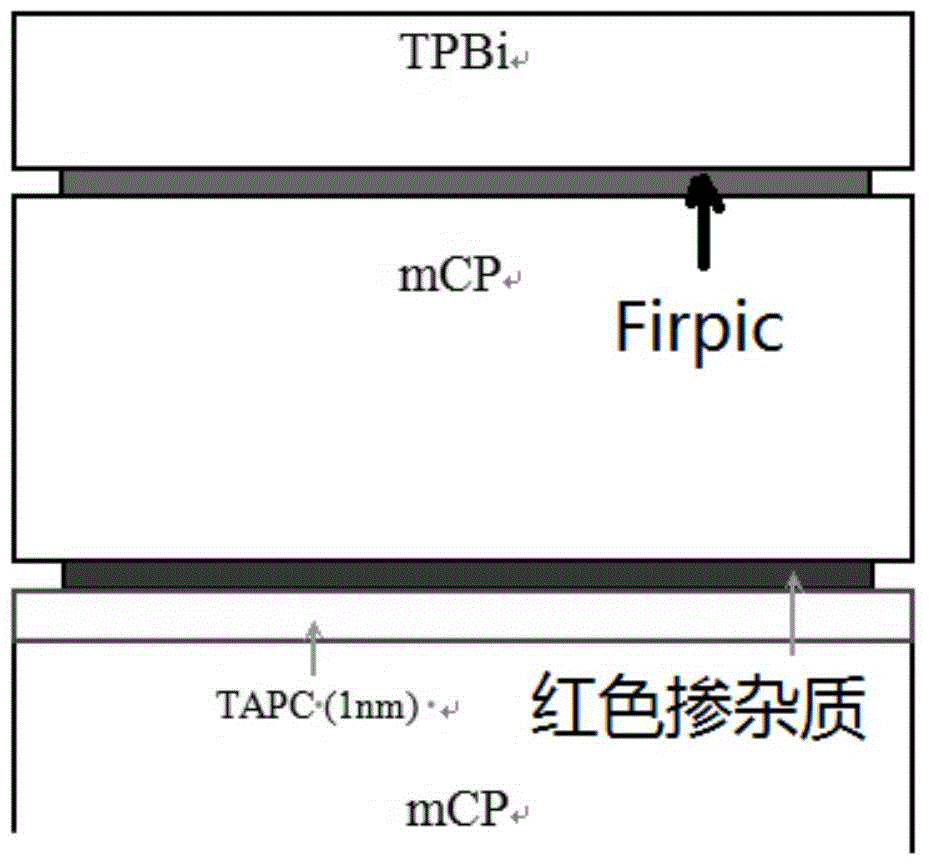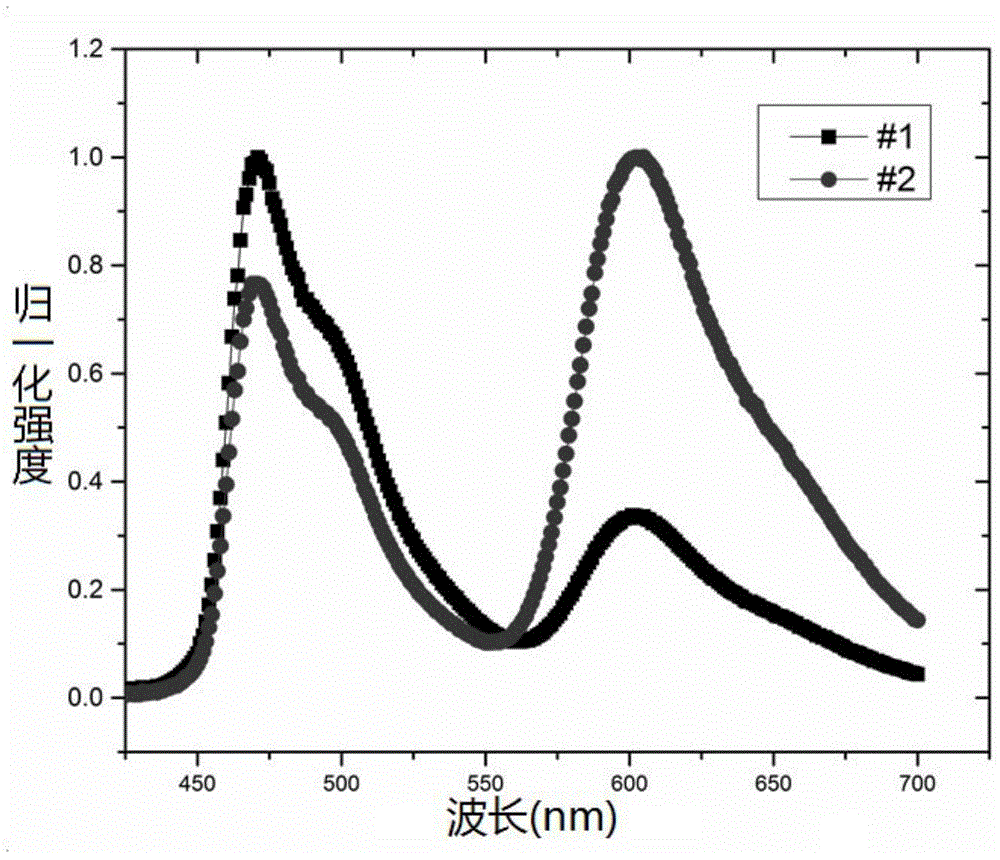Method for changing exciton distribution in organic light-emitting diode
A luminescence and diode technology, applied in the field of organic semiconductor electronic materials, can solve problems such as luminescence imbalance, achieve the effect of increasing hole concentration and changing the distribution of excitons
- Summary
- Abstract
- Description
- Claims
- Application Information
AI Technical Summary
Problems solved by technology
Method used
Image
Examples
Embodiment Construction
[0024] The embodiments of the present invention are described in detail below in conjunction with the accompanying drawings. This embodiment is implemented under the premise of the technical solution of the present invention, and detailed implementation methods and specific operating procedures are provided, but the protection scope of the present invention is not limited to the following the embodiment.
[0025] In this embodiment, mCP is used as the host material in the organic electroluminescent diode, TAPC is used as the ultra-thin insertion layer material, and the organic electroluminescent diode adopts an ultra-thin non-doped light-emitting layer structure.
[0026] figure 1It is a principle diagram of the present invention. Among them, mCP is used as the main material of the organic electroluminescent diode, and TAPC is used as the ultra-thin intercalation layer material; the highest occupied orbital (HOMO) energy level of the ultra-thin intercalation layer material TA...
PUM
 Login to View More
Login to View More Abstract
Description
Claims
Application Information
 Login to View More
Login to View More - R&D
- Intellectual Property
- Life Sciences
- Materials
- Tech Scout
- Unparalleled Data Quality
- Higher Quality Content
- 60% Fewer Hallucinations
Browse by: Latest US Patents, China's latest patents, Technical Efficacy Thesaurus, Application Domain, Technology Topic, Popular Technical Reports.
© 2025 PatSnap. All rights reserved.Legal|Privacy policy|Modern Slavery Act Transparency Statement|Sitemap|About US| Contact US: help@patsnap.com



